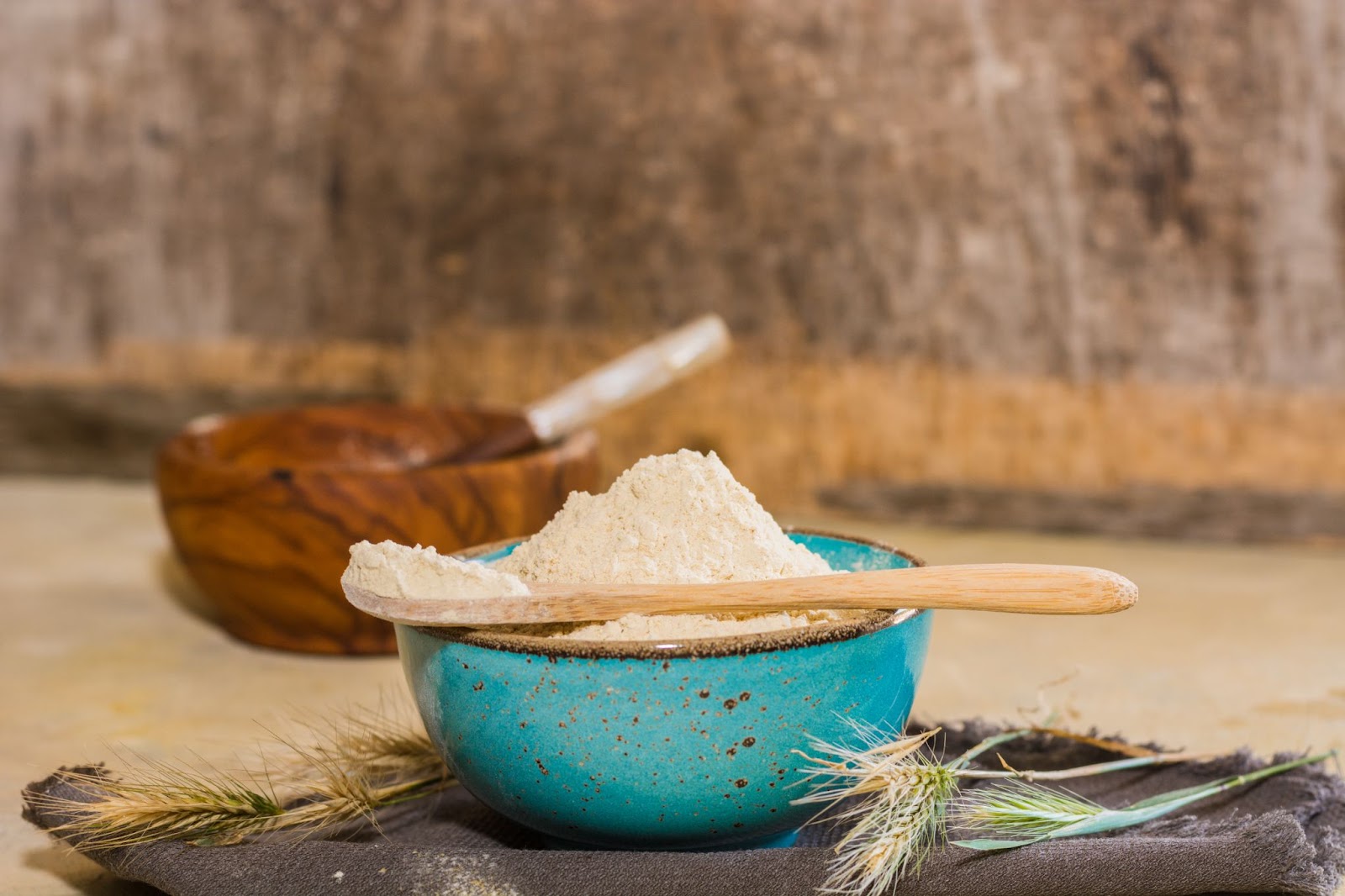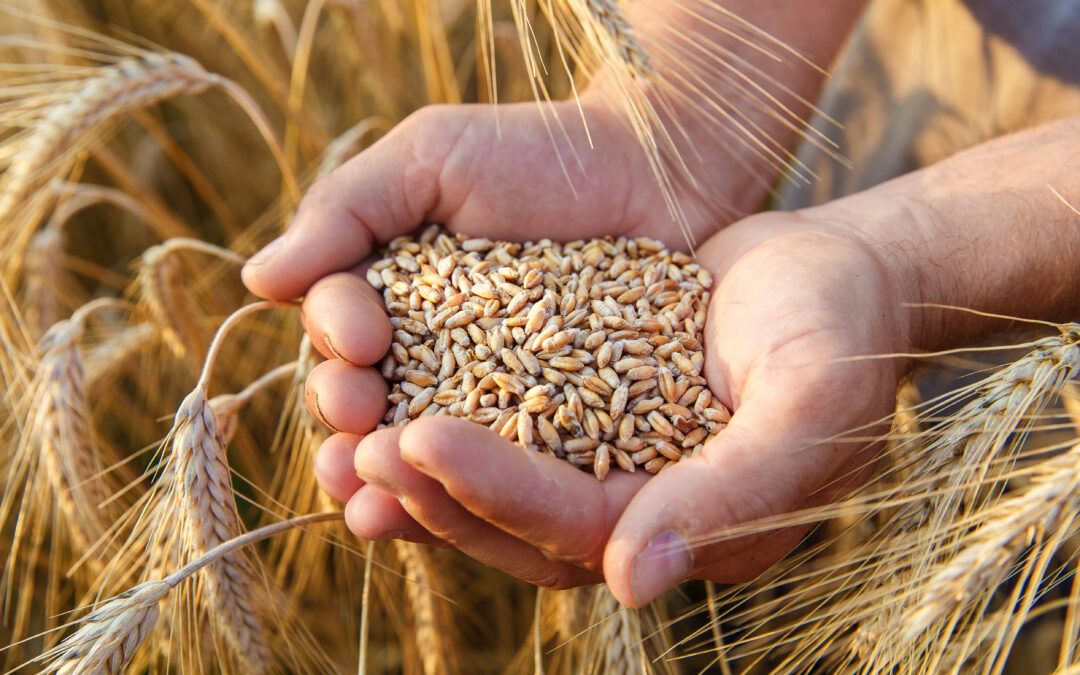According to the U.S. Department of Agriculture (USDA), wheat is the third most important field crop in the United States and is a dietary source of nutrition for many cultures worldwide.
But why is this grain so important? It all comes down to protein. A single wheat kernel may contain about 6.2% to 19.8% protein content, although this may vary significantly for hard wheat. Wheat provides gluten-rich proteins, carbohydrates, vitamins, minerals, and essential amino acids necessary for human health.
Proteins like albumin, globulin, gliadin, amylase, and glutenin are important components of wheat. Albumin and globulin, two major water-soluble proteins, are responsible for several aspects of wheat grain quality.
Due to their viscoelastic nature, gliadin and glutenin (storage proteins) are mainly responsible for forming the most important fraction of proteins in wheat: gluten.
Gluten proteins are essential for bread making, providing elasticity and cohesiveness in the dough. This is essential for producing bread with good texture. The amount of wheat gluten present is a key factor for baking and the overall grain quality.
Millers and bakers often assess the protein content of their wheat to ensure that it meets their desired specifications. This is because proteins are responsible for a wide range of characteristics in wheat-based products, from the texture and appearance of bread to the ability of the gluten matrix to hold the gas created by the activated yeast.
In this article, we will take a deeper look into the protein content of wheat and discuss how protein content can affect grain quality.
What is wheat protein, and why is it important for millers and bakers?
Wheat protein consists of long and complex molecule chains. These molecules form the foundation of all proteins, providing structure and different chemical properties. Wheat protein content determines the quality of wheat flour and each product’s final baking properties.
Protein content also gives wheat special properties, such as water absorption, dough elasticity, gas retention capacity, and gluten networking/webbing. These factors influence a product’s baking characteristics, such as loaf volume, crust color, crumb structure, and shelf life.
Millers also use wheat’s protein content to assess how easily a grain will break down (or mill) into flour. Wheat with higher protein content is usually wheat, and a wheat with lower protein is often described as a soft wheat.
One thing to note is that wheat protein content isn’t the only thing to consider. Functionality is also a critical factor in baking.
Put simply, functionality is the measure of how effectively wheat proteins can form a strong gluten web. These strong bonds ensure that your finished product holds its shape and has the right texture.
This is just an overview of why wheat protein content is important for millers and bakers. The following sections will explore the different types of wheat and their characteristics.

Wheat protein content in different types of wheat
Several types of wheat are grown worldwide, each with a unique protein content. Below is a comparison of the protein content of some common wheat varieties.
Durum (hard) wheat protein content
Durum wheat (Triticum durum) has a high-protein content of around 15%. It has a amber endosperm and white bran and is commonly used for making pasta and semolina products.
Hard red spring wheat protein content
Hard red spring wheat has a protein content of 12.0% to 15.0%. Some hard red spring wheat varieties may have higher protein content, with some cultivars having protein content as high as 16% to 18%. This high-protein class of wheat is often the most expensive bread wheat. Millers and Bakers frequently use this wheat class to make whole wheat for harder breads and rolls like bagels and artisan style breads.
Soft red wheat and soft white wheat protein content
Soft red and soft white wheat are low-protein classes of wheat that typically have a protein content of 8.5% to 10.5%. People commonly use it to make cakes, pastries, crackers, Asian-style noodles, and other snack foods. It has a lower gluten content than other wheat types, resulting in a lighter, softer product.
Winter wheat, grown in the fall and harvested in the spring, has a lower protein content (10.0% to 13.0%) when compared to spring wheat. Examples of winter wheat include hard red winter, and hard white.
Spring wheat is planted in the spring and harvested in late summer or early autumn, with a protein content of 12.0% to 15.0%. Spring wheat examples include durum, hard red spring, and hard white.
How wheat protein content affects milling
In this section, we will look at how wheat’s protein content affects milling.
Understanding the role of wheat protein in flour milling
Wheat’s protein content affects the milling process in several ways. The higher the protein content of a wheat class, the more difficult it is to grind into flour.
High-protein wheat flour requires more energy to reduce the endosperm into flour sized particles and as a result requires a longer temper time to mellow the endosperm.
In addition, high-protein wheat flour tends to have larger particles and therefore a coarser texture when milled. Low protein wheat, on the other hand, has smaller particles and therefore a finer flour.
Costs of growing high-protein wheat
Protein production in wheat requires nitrogen. To increase the protein content of any given wheat crop it can require fertilizer to achieve the objective of high-protein wheat. This increases input costs for farmers, making high-protein wheat varieties more expensive to grow.
The higher cost of production is typically passed on to consumers in the form of higher prices for products made with these types of wheat. However, it is worth noting that costs of wheat is complex, with many factors contributing to the overall market values.
How wheat protein content affects baking
In this section, we will take a closer look at how wheat’s protein content affects baking.
Understanding gluten formation
Gluten is a protein that forms when wheat flour is mixed with water and kneaded or mechanically manipulated during dough preparation. The amount of gluten in wheat is proportional to its protein content and typically makes up 70% to 75% of the total protein content. Gluten formation is key to a finished baking product’s overall texture and flavor.
How protein content affects dough strength and elasticity
The wheat’s protein content also determines the dough’s strength and elasticity. High-protein wheat varieties often have stronger doughs which can affect the dough’s elasticity. .
These doughs are better able to hold gas and retain their shape during baking, resulting in a more uniform volume of the finished product. Low-protein varieties, on the other hand, produce weaker dough’s and although more elastic, they may not hold the gas as effectively as a higher-protein wheat flour.
Importance of protein content for different baked goods
Various products require different levels of protein content in wheat. Bread and other yeast-based products require higher protein content to create a strong dough that can trap gas from the yeast during fermentation, giving it a light texture.
You need a moderate amount of protein in cookie and cracker dough to ensure the goods retain their shape and crispiness. A lower protein content is preferred for cakes and pastries to achieve a softer texture.
Factors affecting wheat protein content
Several factors affect wheat’s protein content. Climate, soil quality, and growing conditions all influence the grain’s captured nitrogen thus, affecting its protein content.
Additionally, varieties with shorter growing seasons typically have a lower protein content than those with longer growing seasons. Lastly, the amount of nitrogen in the soil can also affect protein content.
How to improve the functionality of low-protein content wheat
Here are a few ways to improve the functionality of low-protein wheat.
Strategy 1: Use VolMAX flour technologies
Maintaining consistent protein levels in wheat grists has been a challenge flour millers have faced for years.
They typically only have two options when it comes to sourcing wheat: Source the best wheat in the world at any cost, or blending wheat classes to enhance the functionality of the available wheat.
However, with VolMAX flour technologies, millers can now utilize a third option. Volmax is an affordable additive and enzyme blend we developed to combat the protein challenges typical of droughts, high moisture years, or other environmental issues.
By making a blend of medium and high-protein wheat varieties and adding VolMAX, millers can now achieve consistent performance typical of a high protein flour.
How does this work? VolMAX strengthens the web-forming properties of low- or medium-protein wheat so it can hold gas like higher-protein wheat. This makes it a more viable option for flour millers.
Discover how VolMAX Flour Technologies can benefit your mill
VolMAX is a revolutionary enzyme technology that helps millers easily produce a consistent performing flour for their customers when high-protein wheat is not available or is expensive..
Using a blend of medium and high protein wheat, VolMAX can significantly improve the functionality of wheat flour, making it a more viable option for flour millers. And not only does VolMAX help millers produce higher-quality wheat flour, but it can also reduce their sourcing costs significantly.
Reach out to an expert at Engrain and discover how VolMAX Flour Technologies can benefit your mill.. We look forward to helping you optimize your wheat performance.
